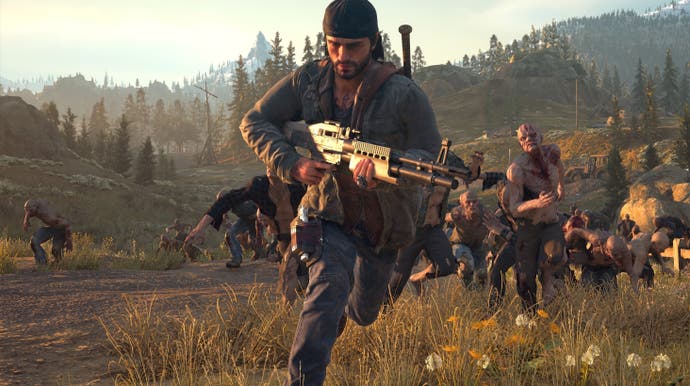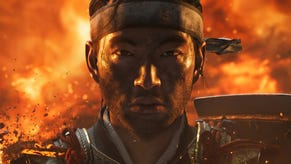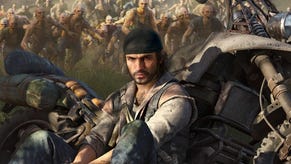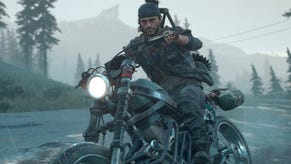Here's all we learnt after three hours playing Days Gone
All-new gameplay, plus an interview with creative director John Garvin.
Of all Sony's upcoming PlayStation 4 exclusives, it's fair to say that Days Gone is the most maligned. Delayed several times and struggling to impress before last year's E3, Sony Bend's open world action game - in development for some six years - feels somewhat unfancied.
The perfect place from which to spring a surprise when it launches this April? Perhaps. Ian Higton got to sit down with Days Gone for a decent chunk of time last month, then sat down with creative director John Garvin to talk through what's new, what's changed - oh, and of course about Syphon Filter, because who could resist?
How long have the characters and premise been rattling around in your head?
John Garvin: For me it starts with gameplay and premise and setting, and then characters, then story. We worked on everything together and it all comes together at the same time in a weird way. The main character, Deacon St. John, probably didn't appear as you know him today until about 2014, a year into development, because we were more focused on creating the technology that's going to make a PS4 game. Why are we doing this on the PS4, how are we pushing the hardware, what are we doing that's innovative that can create and experience the player hasn't had before? And that was all about the horde and about the bike and the open world and then I'm thinking at the same time, what kind of a character do I want to create that I can identify with or that has a story and a journey that can be compelling.
And then once the story takes off, it just becomes a matter of trying to create as much conflict as possible. How do I make this guy's life as miserable as I possibly can? Because that's where good stories happen - doing horrible things to good people.
This game is really big on story but also has this huge open world setting. How hard has it been to balance the story you want to tell with the story players will make for themselves in this open world?
John Garvin:One of our goals from the beginning was to figure out a way to tell a strong narrative in an open world, because Bend Studios have always done third person shooters that were character or narrative driven throughout all the Syphon Filter games and Uncharted Golden Abyss. It's always been about character and how to tell a story through gameplay and doing that in an open world is super challenging because you can do so many things and get distracted.
So there's a couple of things we've done - everything in the game is tonally consistent so everything you're doing in the open world relates directly to the thesis of the game, which is, what would you do to survive and what kind of an impact will that have on you and how you can make the world a better place and how do you survive in a world that's constantly trying to kill you? We don't have a lot of goofy side activities or side characters you meet in the open world because the world's just too dangerous, you're not going to be able to run into them. So having everything you're doing in the world being centred around the survivor encampments and trying to make the world safe around them those feed back into the core storylines and having a really strong narrative that is told through cutscenes and voice over in a way that is easy to follow because of the storylines featured.
It's kind of like how you consume media now, and this is something that's only just happened in the last five years, where you're like "Oh hey here's this whole series that's dropped" and I'm jumping back and forth between series and having the Storyline Feature lis a way that's kind of like streaming media that lets you keep track of which story you're in and where you're at. So when you see something on the map, and it's like, oh here's this icon that represents a continuation of the Sarah storyline and then you can jump into that and experience that flashback and see where that happens in the storyline.
Judging by the portion I played there's still plenty of emergent elements in there to appeal to those who prefer those things.
John Garvin: Oh absolutely, so I think one of the things that's going to be super interesting when the game comes out is people streaming it live or uploading YouTube videos of their playthroughs because the world is so dynamic and there are so many systems at play, so many things could happen and there's no way you can predict what's going to happen next.
There were some really interesting Freakers that I kind of took pity on. I think they were called Newts and they seemed to be child zombies.
John Garvin: Yeah, they're adolescents. The tone of the entire game is that this virus has affected everyone and everything including human beings and animals. We just really wanted to make sure that we were grounded and tried to be as real as possible and we really wanted an enemy type that was creepy and dangerous but in a different way, so the Newt adolescents aren't going to be able to fight a full grown swarmer - that's why they stay up on the rooftops out of the way but they're still dangerous because it you're low on health they'll come down and attack you.
Was there a scene where I saw swarmers eating a newt?
John Garvin: One of the things we really wanted to do was have something called a Freak-o-system, where every enemy in the game will attack every other enemy type in the game. So if you have a Rager Bear that had come through that scene the swarmers would try to attack it and probably they would lose, and the hordes will attack marauders so every possible enemy type in the game will attack every other one and that's something the player can actually use to their advantage because you can weaponise them by taking a swarm, dragging them into a marauder camp and just letting it play out. you just never know what's going to happen and it's that unpredictability that we really like.
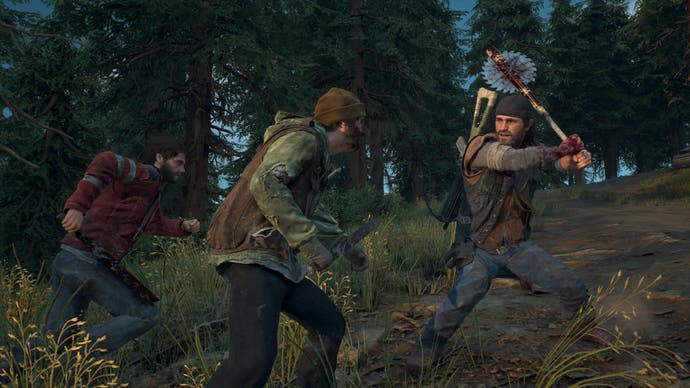
The game begins right in the thick of things as the outbreak is happening. Do we ever get to find out what caused the outbreak?
John Garvin: There's a storyline called World's End, and if you explore the open world you're going to find so many signs of what happened. You'll find signs of NERO - which is the National Emergency Response Organisation - it's kind of like our version of FEMA mixed with NSA and they have checkpoints that are abandoned and they have refugee camps and mass grave sites and trains where they hauled in all the corpses from the cities for mass burial out in the wilderness. You're going to be able to find all kinds of information about what happened as the world was ending, about what research they were doing on the first infected subjects. Eventually you'll see that there's still choppers flying around in the open world today and you can follow them and spy on them and juts learn all sorts of information so there's a lot of answers out there for the player that wants to track them down.
I think I saw that there were around about 240 collectables in total.
John Garvin: Across a bunch of categories, yeah! So a bunch of those are NERO intel which are audio recordings that were made in the field about all sorts of things.
Is it still the case as it was at E3 last year where if you lose your bike or fast travel way from it you still have to walk all the way back to get it or have you introduced any mechanics to make its retrieval easier for the player?
John Garvin: So there's a couple of mechanics that we have that will allow the player to retrieve their bike. One of which is, if you're close to the area, if you somehow drive it into a lake or something, you can just retrieve it and put it right back to where your current position is, because we're not trying to punish the player for wanting to explore the world. Or you can go back to one of the survivor encampments and you can actually pay the mechanic there to retrieve your bike for you. But that costs credits and you have to have a degree of trust at the camp in order for them to do that.
How many different types of Freakers out there? I spotted 9 different types of bounties in the menus so does that mean there new freakers that you've not yet announced?
John Garvin: There's a few we haven't talked about yet and we're going to leave a few surprises for the game but there's definitely more than we've talked about and each of them have tier unique bounty.
What tweaks have you made in the period where the game was delayed. John Garvin: We've just been putting extra polish in the game and bug fixing and yeah trying to make the game as polished as we possibly can.
Finally, any chance of a Syphon Filter reboot or remake on the horizon after this?
John Garvin: I really appreciate that question because I was a writer and a director on all the Syphon Filter games. I love Syphon Filter but man we have been so focussed on Days Gone but when this thing ships and I can relax... I'll think about it. Never say never!
